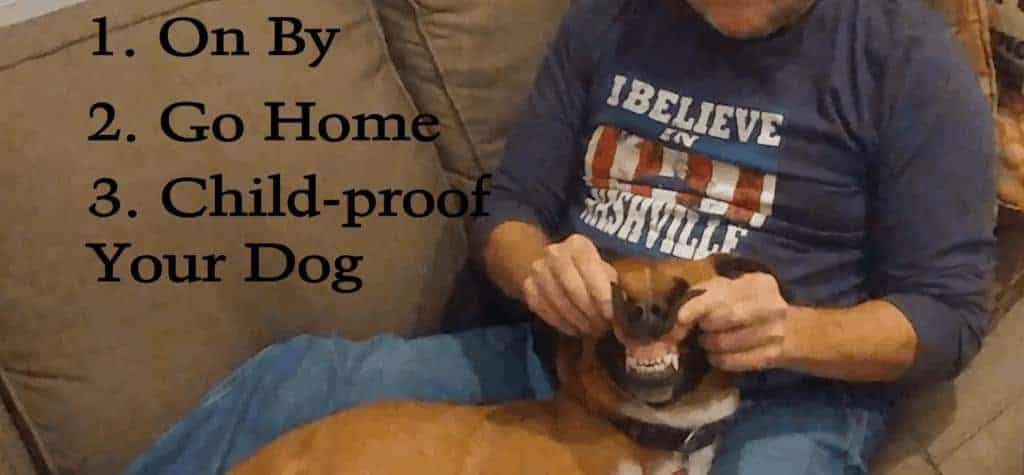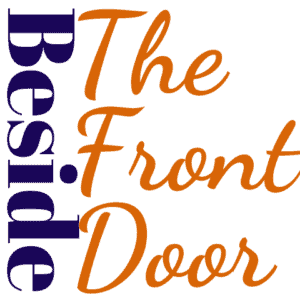When you have covered the 7 basic commands for dogs, sit, stay, down, come, heel, off, and no, what then? There are next-level training to teach your dog beyond the absolute minimum that will help your dog stay safe, happy, and welcome away from home.
The next level in training for your dog after the basic commands are:
- On By – ignore distractions and keep moving
- Go Home – off-leash to return directly home
- Child-proofing – reduce the chance of reactivity or bites to enthusiastic handling
The first two are adapted from the dogsledding world and the last from extended dog experience. None of these are taught and then they know it for life, you have to practice and keep returning to them to keep the commands fresh.
This is how to begin teaching your dog these next commands.

1.On By is a command that you use when walking with your dog or puppy, that tells them to ignore distractions and temptations and keep moving. Distractions like other dogs, children, joggers, or birds. Temptations like sniffing each and every spot another dog has urinated at, an unknown abandoned snack, a squirrel running off to the trees, or another dog’s frisbee or ball.
After your dog’s basic heel command has been learned, it does not have to be dog show perfect, but generally good with the exception of pulling on the leash from distractions, is a good time to introduce this command.
Like any other behavior, teach it in a controlled area. Start with high-value treats. Walk with small treats, some of my favorites are here, and practice slipping them to your pup while still on the move. You practice this, and both of you practicing to move and they are keeping their attention on you. Set up some instances where you are walking past known distractions, a food bowl on the side of your path. Go to where you know to expect ac few distractions to practice on.

While walking your dog on a leash the one we use and you can see in the videos is shown above and click on here) and you see a distraction approaching, like a jogger.
- start to quietly start repeating “on by…”, “on by..”, “on by…” the entire time until you have passed the distraction
- as you see your dog’s attention caught by whatever the distraction is, a quick, gentle (or not so gentle if need be) tug on the leash to return their attention to you and what you are saying
- keep repeating
- even if the ‘on by’ was not perfect, praise them and tell them “good on by”, “good on by”.
They can quickly learn to pay no mind and keep going. This will make your walks so much easier. Repeat this and use it every time you come to a distraction.
After this is a reliable command in your dog’s vocabulary, then this can also be used to help your anxious dog past something they find fearful, such as big trucks, lawn irrigation, or car horns. The gentle repetition of the command gives your anxious dog something to focus on besides the fear, and return their attention to you.
“The treats we like are either homemade peanut butter and pumpkin, cheese, or freeze-dried liver.”
Toni Colgrove

Go Home 
Go Home
2. Go Home. This command is almost self-explanatory, but why would you want to teach it and how to start it?
There are several reasons to teach this command. When you are outside, and something unexpected comes up, and you want them to go back to the house. Such as a mailman stops by with a delivery at the mailbox, or you know the irrigation is about to start, and want them off the lawn before that happens. Also if your dog gets loose in the neighborhood, and someone tries to shoo them away, they will most likely use the phrase “Go Home”. Your dog will know just what to do…they will go home and sit by the door and wait.
We use this mostly to help us bring in things from the car when we have hands too full to also have a leash and to safeguard against him getting out in the neighborhood, and coming back. It does make your life easier than in more ways than you can imagine.
The way to start teaching this is:
- every time you return to where you enter your home, when it is in sight, start saying “go home, go home, go home”
- when you have arrived, ask them to sit
- give a lot of praise
- As you do this repeatedly, ask them to sit for longer periods of time, 5 seconds, 10 seconds, and so on.
- start to expect them to sit without being told to sit at the conclusion of “go home”
- wait for a sit before treating them. If they forget, request a sit, then treat.
As they start to understand, ask for the behavior with less and less direction from you with the leash. Eventually, start removing the leash a few steps away from home, and then further and further until you are at the edge of your property.
Start adding the hand motions that shoo dogs away when you say “go Home”. Remember to keep practicing this, and refreshing the behavior, you never know when you will need it unexpectedly.

3. Child-proofing your dog. Well, not exactly child-proof, more child-resistant, and vet friendlier. This will greatly help acclimate your dog to the different touches or even roughness that your dog may face in the hands of untrained children.
When your dog is happy and relaxed, begin to gently pull and prob on them, think of it almost as a massage, mix it up with petting. When your dog is comfortable and unreactive to that, start playing directly with their ears, stroke them, run down the ear with the ear between your fingers. Maneuver the ears to look inside. All the while mixing this in with petting and praise. Treats too. Start as slow as you need to. This is to relax them while you do this. If your dog shows signs of discomfort at all, keep short, mix in more treats and praise, and be gentle. This may be a short, couple of weeks process to move up to playing with their lips to check out their teeth and tugs on the tail, or it can take months. It all depends on your dog’s temperament, trust in you, and history.
Go as slow, and as gentle as your dog needs, but keep returning to this, every day or several times a day, until you are able to work all of the way down the dog’s body, all in one sitting:
- tugging on their ears
- playing with their lips
- open their mouth to look at their teeth
- squeeze their nails
- run your fingers between their toes
- gently grasp their leg and maneuver the joint
- squeeze and tug in their tail
When you can do all of these things, congratulations, you have greatly reduced the chances your dog will be reactive to errant touching of an untrained child.
Remember to keep repeating this and continue to have your dog relax to these touches. Your vet, and groomer will thank you as well!
Related Questions:
How to get my dog to obey commands?
The most proven ways to get your dog to obey commands are to:
- Use rewards, food, or non-food rewards such as praise.
- Work on one new command at a time.
- Reinforce already learned commands by repetition.
- Be persistent, and be willing to reward a partial behavior on a new command.
- End a training session on a positive note, when they have earned a reward.



Where does my dog not like to be pet?
Most dogs are uneasy with something coming down from above. If your dog has not learned to associate petting as positive, they will naturally shy away. Pet or scratch them instead under their chin or on their chest.





